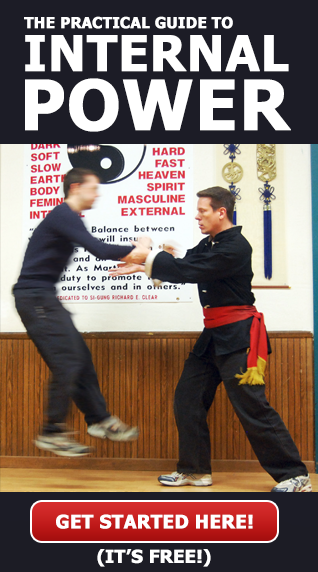I find that I commonly get asked quite a few questions about the 3 main internal arts of Tai Chi Chuan, Bagua & Hsing-I. These questions include but are not limited to:
- How are they different?
- How are they the same?
- Is one of the internal arts better than the others?
- Which one of them is better for fighting?
- Which of the internal arts best applies internal energy for fighting?
- Are all of the 3 main internal arts equally healthy for you?
- Which one should I study?
- Which one should I study first if I want or plan to study more than one?
- What really separates these arts?
- Can they work together?
I will attempt to answer some of these questions in my next few posts and shed some light on these arts at the same time. This will obviously be a comparison and contrast of Hsing-I, bagua and Tai Chi Chuan but I hope to accomplish a bit more than that with this series of posts on these 3 internal arts.
All 3 of these arts are Chinese Internal Fighting arts that utilize the training of specific body mechanics including internal and external alignments as well as the training of the mind and chi energy. All three arts have very different approaches to fighting although at times they are similar and will use similar motions to one another. Once you have trained in any one of them and then try out one of the others the difference in approach and methods is quite apparent and only after you have studied the more in depth aspects for quite some time do they begin to seem more like part of the same bigger picture.
Hsing-I is an art that is known for being very linear in approach and generally is practiced while moving forward with a wave motion much like a sine wave. Ba Gua practitioners are known for traveling and moving in circles that range from very tight and close circles to circles of about 30 feet in diameter and walking the circle is one the signature practices of Bagua. Tai Chi Chuan practitioners are known for practicing slowly because that is what is most often publicly demonstrated. Tai Chi Chuan practitioners focus much more on the idea of controlling the immediate space around them and although there is plenty of movement the fighting method is best thought of as a more stationary practice than Hsing-I or Ba Gua. I will elaborate on these ideas in upcoming posts.
Of the 3 internal arts Hsing-I is the one that generally uses the most force and is harder. Bagua is more often a mixture of hard and soft often using force but sometimes using softness. Tai Chi Chuan can have hard aspects in it but is most known and most practiced at the high levels as a soft art where the application of hard force is discouraged and softness is desired.
I will leave you with this for now. One of my teachers who knew all 3 internal arts and enjoyed them all equally had a saying that he rather liked. It goes as follows.
Hsing-I is a Metal Ball.
Bagua is a Barbed Wire Ball.
Tai Chi Chuan is an Energy Ball.
Until next time.
Good training to you.
All the Best.
Sifu

Great! A simple comparative view of the 3 internal arts. Thanks for sharing.
You are welcome.
Also, please add or ask questions.
Thanks.
Sifu
Which style is best if you are fighting three or more opponents on the street. (without rule, they intent to do bad things)
Thanks for the advise…
Our Kun Tao Silat program would be the fastest way to learn how to survive that type of situation. It includes elements from Hsing-I, Tai Chi & Ba Gua.
Thank you so much for posting this. I look forward to reading later posts!
Great information! I am intrigued by these martial arts, you have a knack for explaining things well sifu. I want to train xing yi, but not quite sure if it’ll suit me best of the three. Could i get more info on each? Any advice would be appreciated.